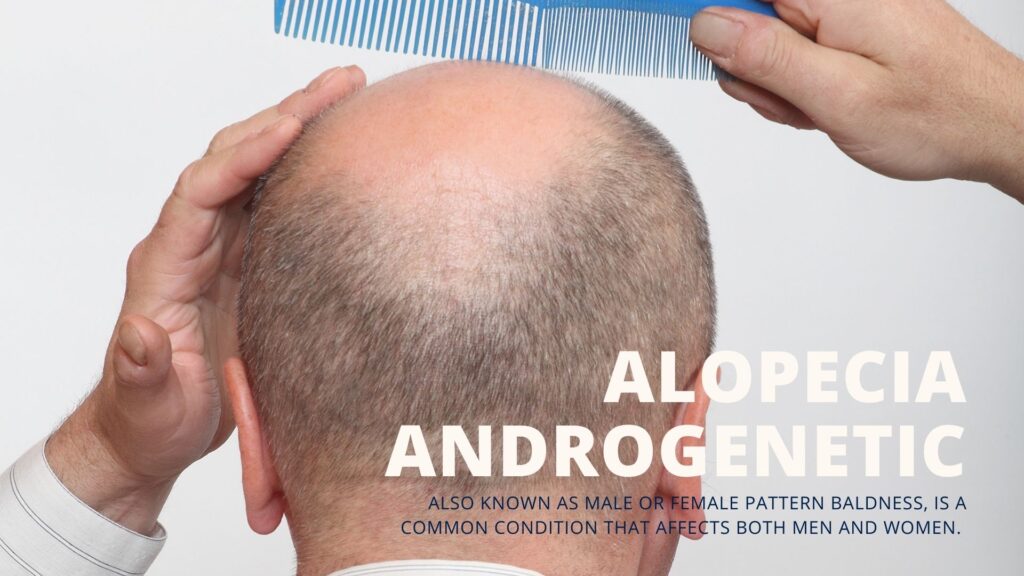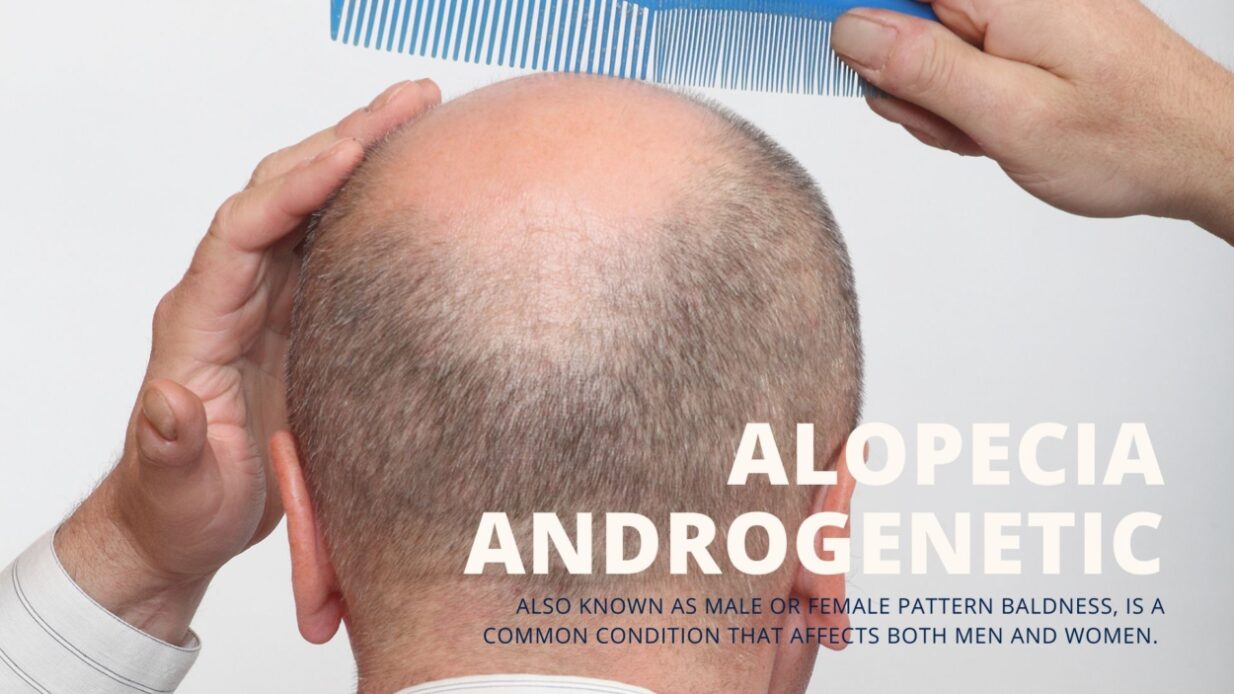Alopecia Androgenetic, also known as male or female pattern baldness, is a common condition that affects both men and women. It is characterized by a gradual thinning of hair on the scalp, resulting in a receding hairline and/or a thinning crown.
In men, the condition typically begins with a receding hairline and thinning at the crown. This can eventually lead to a complete loss of hair on the top of the head, while hair on the sides and back of the head may remain intact.
Women with Alopecia Androgenetic typically experience thinning hair on the top of the head, but the hairline does not recede as it does in men. Instead, the hair becomes increasingly fine and transparent, and may eventually form a “Christmas tree” pattern of hair loss.
The exact cause of Alopecia Androgenetic is not well understood, but it is thought to be related to a combination of genetic and hormonal factors. The condition is caused by an excessive amount of dihydrotestosterone (DHT) in the scalp, which causes hair follicles to shrink and eventually stop producing hair.
There are several treatment options available for Alopecia Androgenetic, including medications such as finasteride and minoxidil, as well as hair transplant surgery. However, it is important to note that these treatments may not be effective for everyone and in some cases hair will not regrow.
It is also important to note that Alopecia Androgenetic can have a significant impact on a person’s self-esteem and emotional well-being. If you or someone you know is struggling with the condition, it may be helpful to seek the support of a therapist or counselor.
In conclusion, Alopecia Androgenetic is a common condition that affects both men and women. It is characterized by a gradual thinning of hair on the scalp. Despite the fact that the cause of the condition is not well understood, there are several treatment options available including medications and hair transplant surgery. However, it is important to note that these treatments may not be effective for everyone and in some cases hair will not regrow. It is also important to seek support if the condition is having a negative impact on your emotional well-being.
Alopecia Androgenetic and Stress
Alopecia Androgenetic, or male and female pattern baldness, can be a stressful condition for those who experience it. Studies have shown that people with the condition may be at a higher risk for developing anxiety and depression. Stress can also exacerbate the condition, as it can cause hair follicles to go into a dormant phase, leading to thinning and hair loss. Stress-related hair loss is often temporary and hair can regrow once the stressor is removed. However, if the stress continues for a prolonged period of time, hair loss can become permanent. Additionally, it’s worth noting that Alopecia Areata, an autoimmune disease, can also be triggered by stress and lead to hair loss. It’s important for those with Alopecia Androgenetic to find healthy ways to manage stress, such as exercise, therapy, or mindfulness practices, in order to protect their hair and overall well-being.


